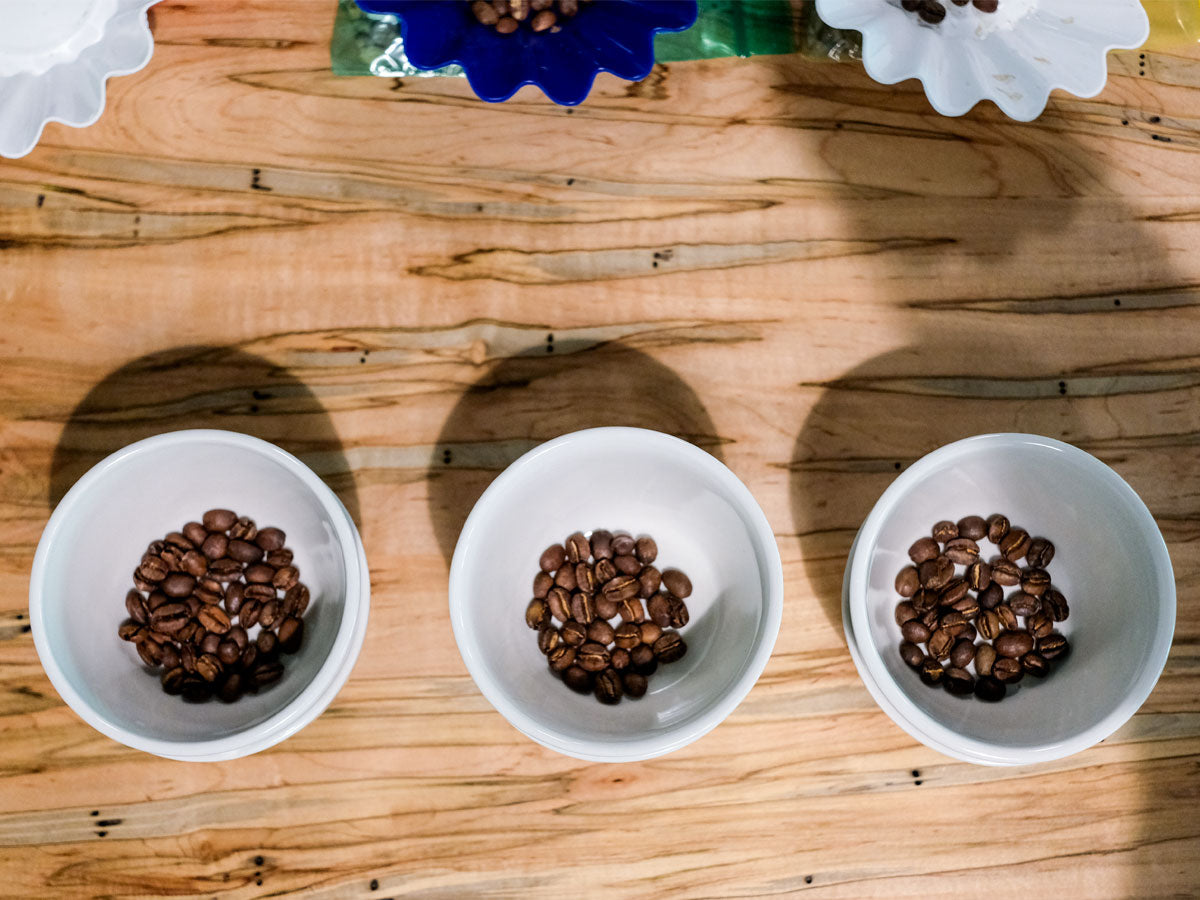The checkout counter at your local coffee shop. The shelves of a Whole Foods. An online retail store for specialty coffee. A gift bag from a friend who knows what you like.
If somebody asks you “where’d this coffee come from?”, your answer might be found among those.
Now, we know that *you* know that that’s not where your coffee really *comes from*. We also know that it’s complicated. We share a lot about coffee origins here in this journal and on our online retail pages, but we realize that there’s a big piece of the puzzle that we’ve left out between coffee origins and retail shelves: the process of choosing a coffee and getting it through the roasting process.
So we sat down with Methodical co-owner and green coffee buyer Will Shurtz to talk about how our coffee makes it from sample to shelf.
Samples of green, unroasted coffee arrive at our roaster a variety of ways—sometimes we’ll pick them up at a trade show, sometimes our importing partners send them to us, sometimes exporters and importers will just send them unprompted. There can be a *lot* of samples to sort through. We do this through a process of sample roasting (roasting very small batches with a special roaster) and cupping.

Angie: I know you just cupped a ton of samples. Is there one, or even a few, that stood out to you?
Will: Yes! This honey processed Gesha from Finca Nueva Granada in Guatemala! It's gonna be awesome!!
A: Where did those samples come from?
W: They came from [our importing partners] Balzac Brothers.
A: Will you cup them again before making a decision?
W: Kind of, but not really. We have forward contracted for it already. These were preship samples, but unless it shows up and is basically a totally different product, we're in it to win it!
A: How many times will you cup a sample before deciding to purchase?
W: We try to be as decisive and responsive as possible, so it’s important for us to take great notes the first time we cup a coffee, because ideally, we'd just like to cup a sample one time and be able to make our purchasing decision.
A: What do you consider when deciding to purchase coffee?
W: We consider the quality, the freshness (like when was it harvested/when did it land in the states), the need for a coffee of its kind on our current menu, and most of the time, the uniqueness of the coffee, unless we are looking for a more standard mainstay offering.
A: Generally speaking how long do you have to wait in between placing an order and delivery?
W: Once we release some coffee that we have contracted, it usually arrives within the week! But most of the time, the timeline is this: Sample preships and contract for the coffee. Wait on the coffee to arrive in the United States. Cup an arrival sample of the landed coffee to ensure shipment integrity. Release the coffee from the warehouse to our facility. Profile the coffee. And send it out to the world!'

A: Once the coffee is delivered, what has to happen before it goes to the retail shelves?
W: Once we have the coffee, we need to finalize our tasting notes, come up with pricing, get info to you [Angie] for the bio creation, order a stamp, profile the production roast for the coffee, then launch it on the site!
A: If you had to estimate, how long would you say it takes between receiving a sample and selling the coffee in-store and on the website?
W: Depends on if the sample is a preship or an arrival sample. If it's a preship, we could be waiting 2 months before the coffee even arrives in the States! Then at least another 2 weeks to launch everything, but maybe even 1 month more before its all live. Making the waiting time a 3-month process from the producing country to the website. If it is an arrival sample. It could be between 2 weeks and a month!*
Thanks a bunch, Will!
The process of getting coffee samples in the door and getting roasted coffee out the door (and into your kitchen), requires several steps. From sorting samples and cupping to settling on a roast profile and getting marketing materials in order, it’s a long journey for a little green bean. We love doing it though (truly—ask anyone in the roastery) and we hope you learned a little bit more about what your coffee goes through before you snag a blue floral bag from our retail shelves. Now, when someone asks you “where did this coffee come from?” you’ll have the inside scoop.
*This interview has been edited for clarity.
Written by Angie Thompson













